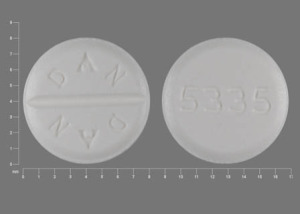Trihexyphenidyl Dosage
Medically reviewed by Drugs.com. Last updated on Feb 10, 2025.
Applies to the following strengths: 2 mg; 5 mg; 2 mg/5 mL
Usual Adult Dose for:
Additional dosage information:
Usual Adult Dose for Extrapyramidal Reaction
Initial dose: 1 mg orally once; if symptoms are not controlled in a few hours, additional doses should be provided until satisfactory control is achieved
Maintenance dose: 5 to 15 mg/day orally in divided doses; although some patients may benefit from 1 mg/day
Comments:
- Control of extrapyramidal symptoms (EPS) may be more rapidly achieved by temporarily reducing the dose of the responsible agent.
- After symptoms have been controlled for several days, it may be possible to reduce the dose of discontinue use; there are reports of EPS remaining in remission for long periods after this drug has been discontinued.
Use: For the control of extrapyramidal disorders caused by central nervous system drugs such as the dibenzoxazepines, phenothiazines, thioxanthenes, and butyrophenones.
Usual Adult Dose for Parkinson's Disease
Initial dose: 1 mg orally once a day
- Titrate in 2 mg/day increments every 3 to 5 days
Maximum dose: Some patients, particularly those with postencephalitic parkinsonism, may require 12 to 15 mg/day
Concomitant Use with Levodopa: 3 to 6 mg orally per day in divided doses
- When used concomitantly with levodopa, the dose of both drugs may need to be reduced
- Adjust doses based on side effects and symptom control
Comments:
- Doses should be individualized; start low and increase slowly, especially in elderly patients.
- The total daily dose may be better tolerated if given in divided doses; doses greater than 10 mg/day should be divided and given 4 times a day.
- The decision to dose before or after meals should be based on the needs of the patient; this drug does cause dry mouth and taking before meals may be beneficial, unless it causes nausea.
Use: For the adjunctive treatment of all forms of Parkinson's disease.
Renal Dose Adjustments
Use with caution due to a lack of pharmacokinetic data; start low, titrate conservatively and closely monitor
Liver Dose Adjustments
Use with caution due to a lack of pharmacokinetic data; start low, titrate conservatively and closely monitor
Dose Adjustments
Elderly: Patients over 60 years have shown greater sensitivity to the action of parasympatholytic drugs; therefore, initial doses should be low and patients should be monitored closely
Discontinuation:
- Abrupt discontinuation should be avoided as it may result in acute exacerbation of parkinsonism symptoms
- Neuroleptic malignant syndrome has been associated with abrupt withdrawal
Concomitant Use with Other Parasympathetic Inhibitors:
- This drug may be substituted for other parasympathetic inhibitors
- To substitute, initiate with partial substitution, then progressively reduce the other parasympathetic inhibitor as the dose of this drug is increased
Precautions
CONTRAINDICATIONS:
- Hypersensitivity to the active drug or any product excipients
- Narrow angle glaucoma
Safety and efficacy have not been established in patients younger than 18 years.
Consult WARNINGS section for additional precautions.
Dialysis
Data not available
Other Comments
Administration advice:
- Take orally with or without food
- If gastrointestinal upset occurs, take with food
Storage requirements:
- Oral Solution: Protect from light and moisture; do not freeze
General:
- Anticholinergics, including this drug, are not effective in controlling tardive dyskinesia (TD) and in some cases, may aggravate it or induce previously suppressed symptoms.
- This drug has been abused because of its hallucinogenic and euphorigenic effects; the precise mechanism for the euphoria and hallucinations are unclear, but it is possible that the drug produces a form of anticholinergic delirium.
Monitoring:
- Check intraocular pressures at regular intervals
Patient advice:
- Read the US FDA-approved patient labeling.
- Patients should be cautioned about use in hot weather; lack of sweating may cause hyperthermia/heat-stroke.
- This drug may cause drowsiness; avoid driving or operating machinery if you feel drowsy or dizzy.
- Patients should be counseled on concurrent use of alcohol and CNS depressants.
- Patients should be instructed to report gastrointestinal problems, fever, or vision problems.
- Patients should be advised not to stop taking this drug without consulting with their healthcare provider.
More about trihexyphenidyl
- Check interactions
- Compare alternatives
- Pricing & coupons
- Reviews (24)
- Drug images
- Side effects
- During pregnancy
- Drug class: anticholinergic antiparkinson agents
- Breastfeeding
- En español
Patient resources
Other brands
Professional resources
Related treatment guides
See also:
Further information
Always consult your healthcare provider to ensure the information displayed on this page applies to your personal circumstances.


